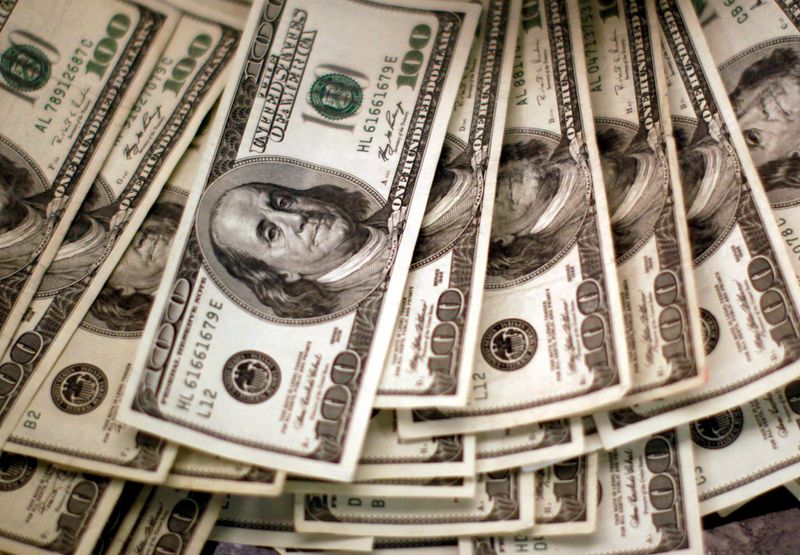![]()
Please try another search

Published Aug 02, 2023 06:02AM ET
Updated Aug 02, 2023 06:07AM ET

© Reuters. FILE PHOTO: Four thousand U.S. dollars are counted out by a banker counting currency at a bank in Westminster, Colorado November 3, 2009. REUTERS/Rick Wilking/File Photo
A look at the day ahead in U.S. and global markets from Amanda Cooper.
Two out of three ain’t so good. On Tuesday, Fitch became the second major agency, after Standard & Poor’s in 2011, to strip the United States of its prized triple-A credit rating.
Fitch cut by a notch to AA+ and cited fiscal deterioration over the next year and repeated down-to-the-wire negotiations on Capitol Hill over the country’s debt ceiling.
Two months ago, lawmakers were haggling over the government borrowing limit and the two sides seemed so far apart that the process threatened to tip the world’s largest economy into a technical default.
The event itself has not come as a shock, given Fitch warned back in June, after the crisis was resolved, that it would finalise that view later in the year.
But the timing has caught a few in the market by surprise.
Investors have responded by knocking equities and scooping up government bonds, which has pushed the yield on the 10-year U.S. Treasury note down towards 4.0%, while the dollar is looking fragile.
For now, investors agree that the downgrade is unlikely to do much to shift international demand for Treasuries or for U.S. stocks, which explains the very muted market reaction.
But it’s a dent to the country’s reputation and puts the health of U.S. public finances in the spotlight, a factor a number of market watchers expect to act as a negative driver of the dollar over the longer term.
A May report by Moody’s (NYSE:) Analytics – a unit of rating agency Moody’s Investors Service, which still has an “Aaa” rating for the U.S. government – said a downgrade of Treasury debt would set off a cascade of credit implications and downgrades on the debt of many other institutions.
There have been warnings from rating agencies, economists, politicians and strategists that the U.S. government spending relative to tax collections isn’t sustainable. Fitch says it expects the U.S. general government deficit to rise to 6.3% of GDP this year, from 3.7% in 2022.
Jefferies notes that, with two of the three major agencies listing U.S. debt at AA, U.S. bonds no longer count as AAA in some key indices. However, according to Jefferies, most investors have moved away from some of the stricter criteria around holding triple-A rated debt, given Germany is the only large issuer left with that rating.
But either way, with a presidential election just over a year away, it’s not a good look.
Key developments that could provide more direction to U.S. markets later on Wednesday:
* U.S. corp earnings: Dupont Nemours, Exelon (NASDAQ:), CVS Health (NYSE:), Entergy (NYSE:), Kraft Heinz (NASDAQ:), Garmin (NYSE:), Yum! Brands (NYSE:), Phillips 66 (NYSE:), Bunge (NYSE:) Ltd, Lincoln National (NYSE:), Albemarle (NYSE:), Occidental Petroleum (NYSE:), ETSY, Cognizant Technology Solutions (NASDAQ:), Atmos Energy (NYSE:), Equinix (NASDAQ:), Qualcomm (NASDAQ:), MGM Resorts (NYSE:), Ingersoll Rand (NYSE:), MetLife (NYSE:), Clorox (NYSE:), Marathon Oil (NYSE:)
* U.S. ADP July private sector payrolls, EIA weekly crude stocks.
>>> Read full article>>>
Copyright for syndicated content belongs to the linked Source : Investing.com – https://www.investing.com/news/economy/marketmind-triplea-headache-3141462































